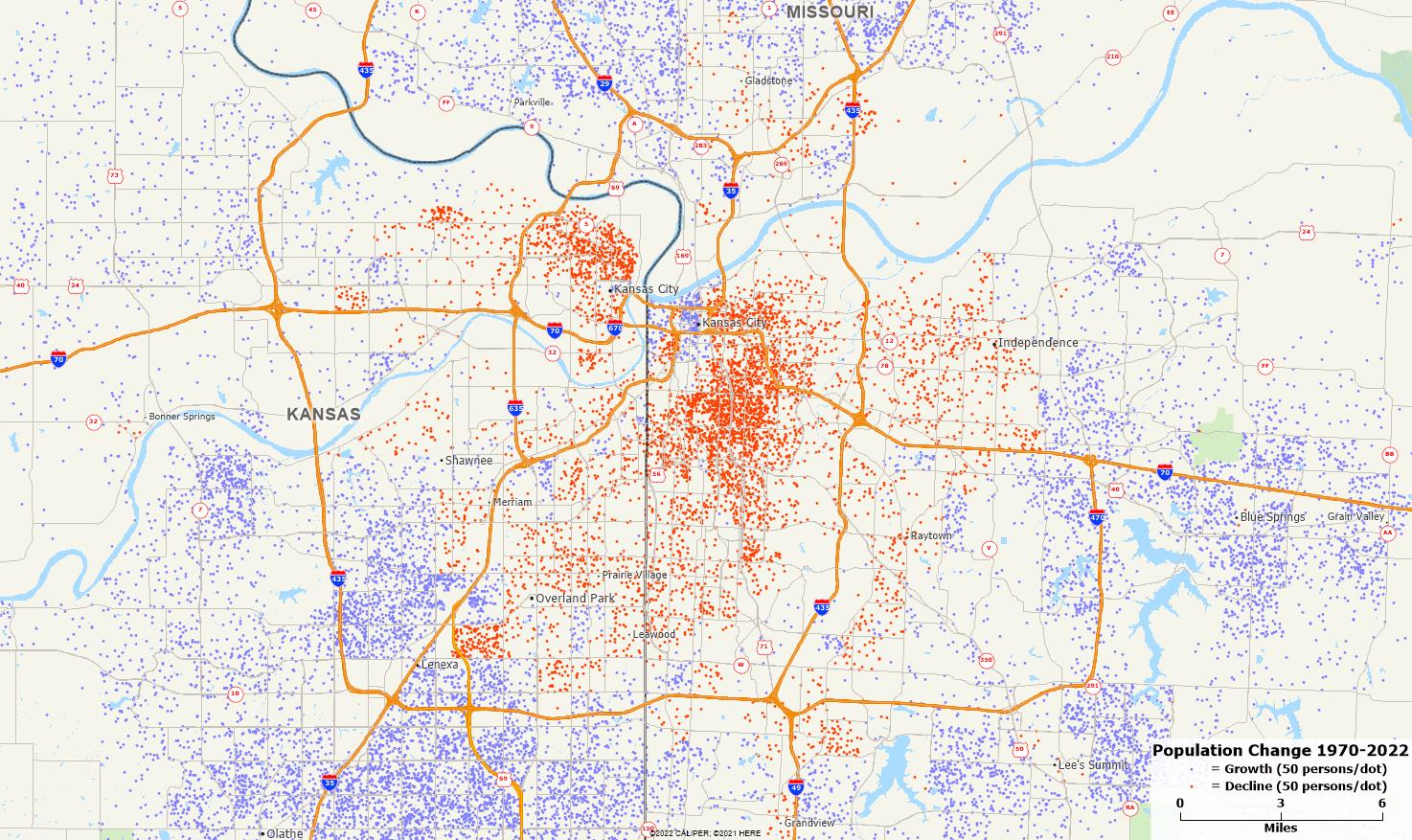Once a critical point in westward expansion, and the convergence of three major trails—the Santa Fe, California and Oregon—Kansas City is the 31st largest metropolitan area in the country. The metropolitan area sits directly on the state line between Kansas and Missouri and is the largest metropolitan area in Kansas, and the second largest in Missouri. Known for barbeque, steaks and jazz, this vibrant area has only seen a moderate increase in population over the last 50 years.
Kansas City has seen a shift to the suburbs, with young families choosing to live there instead of downtown. The map below shows the population shift since 1970, with every blue dot indicating a growth of 50 people, and every red dot indicating a decline of 50 people. While in many areas the population remains relatively unchanged, the Missouri side of Kansas City has seen a decline close to the city, while the suburbs north, east and south have seen growth. The same is true for the Kansas side, though they have not seen the decline as concentrated. Overall, the growth rate from 1970-2022 has been just under 56%.

Overall, the metropolitan area is home to many young families, with a median age of 36, 2 years younger than all other metropolitan areas. The percentage of families with people under the age of 18 is also higher than other areas. Median home values, and cash rent, are both higher than other metropolitan areas, and the houses are newer. There are high occupation rates in management, computer and mathematical occupations, and business and financial operations.
On paper, Kansas City is a great place to live, but why have they not experienced the same growth as other similar sized metropolitan areas. In 1970, the population of Kansas City was very similar to that of the Denver area, which has seen a growth rate of 168% compared to 66%. In the end, most of this comes down to available jobs, as many large corporations are choosing other areas to place their headquarters. Will the Kansas City area be able to attract more tech jobs, or will the area begin to see a decline as people take jobs elsewhere?


Recent Comments